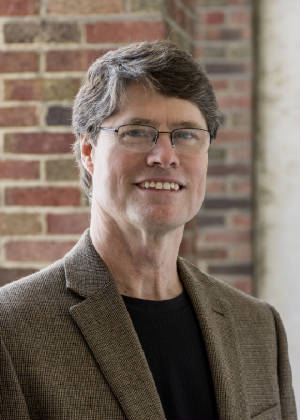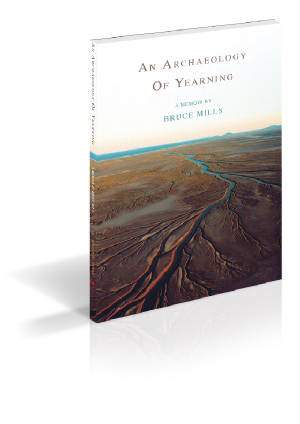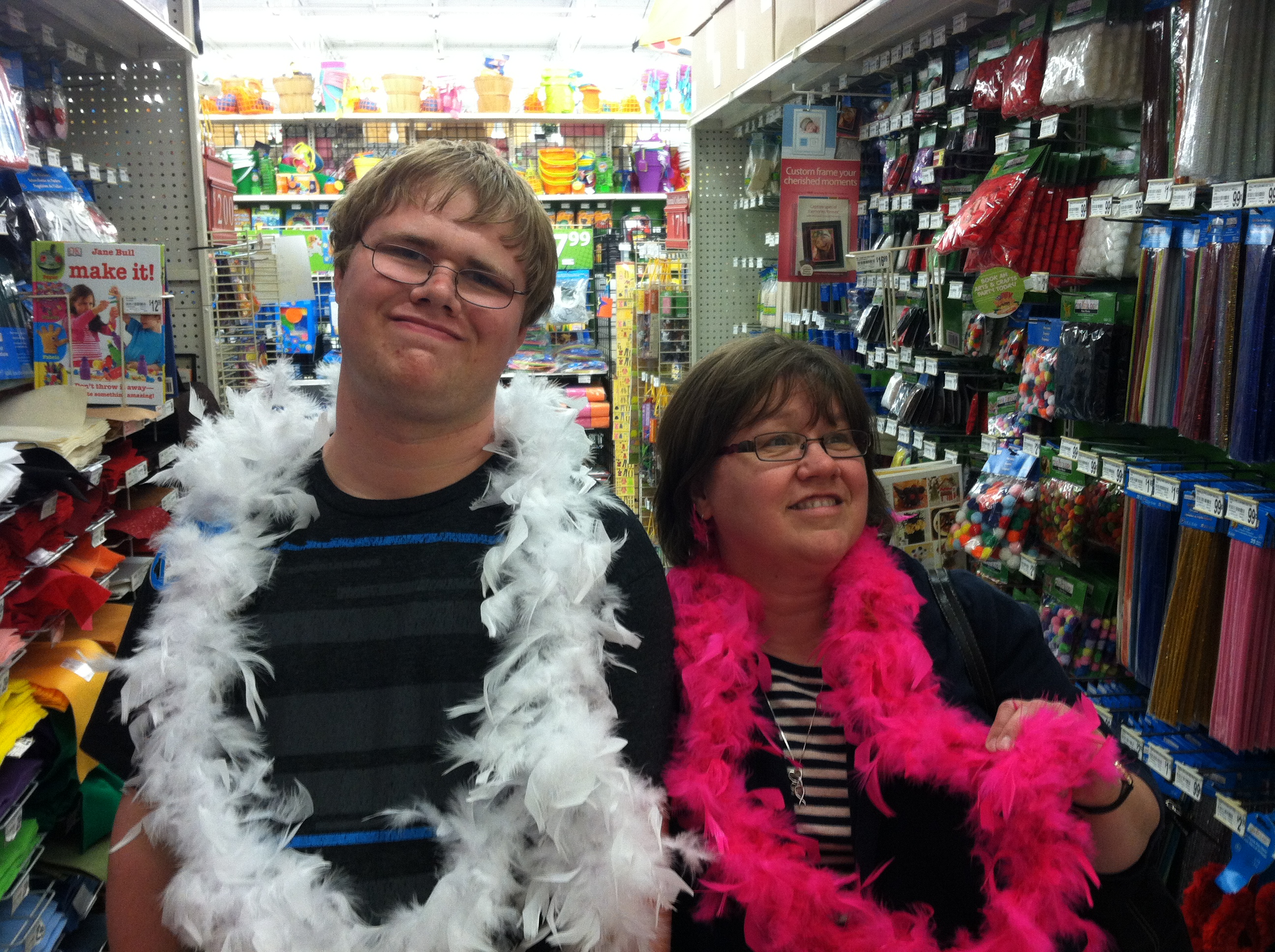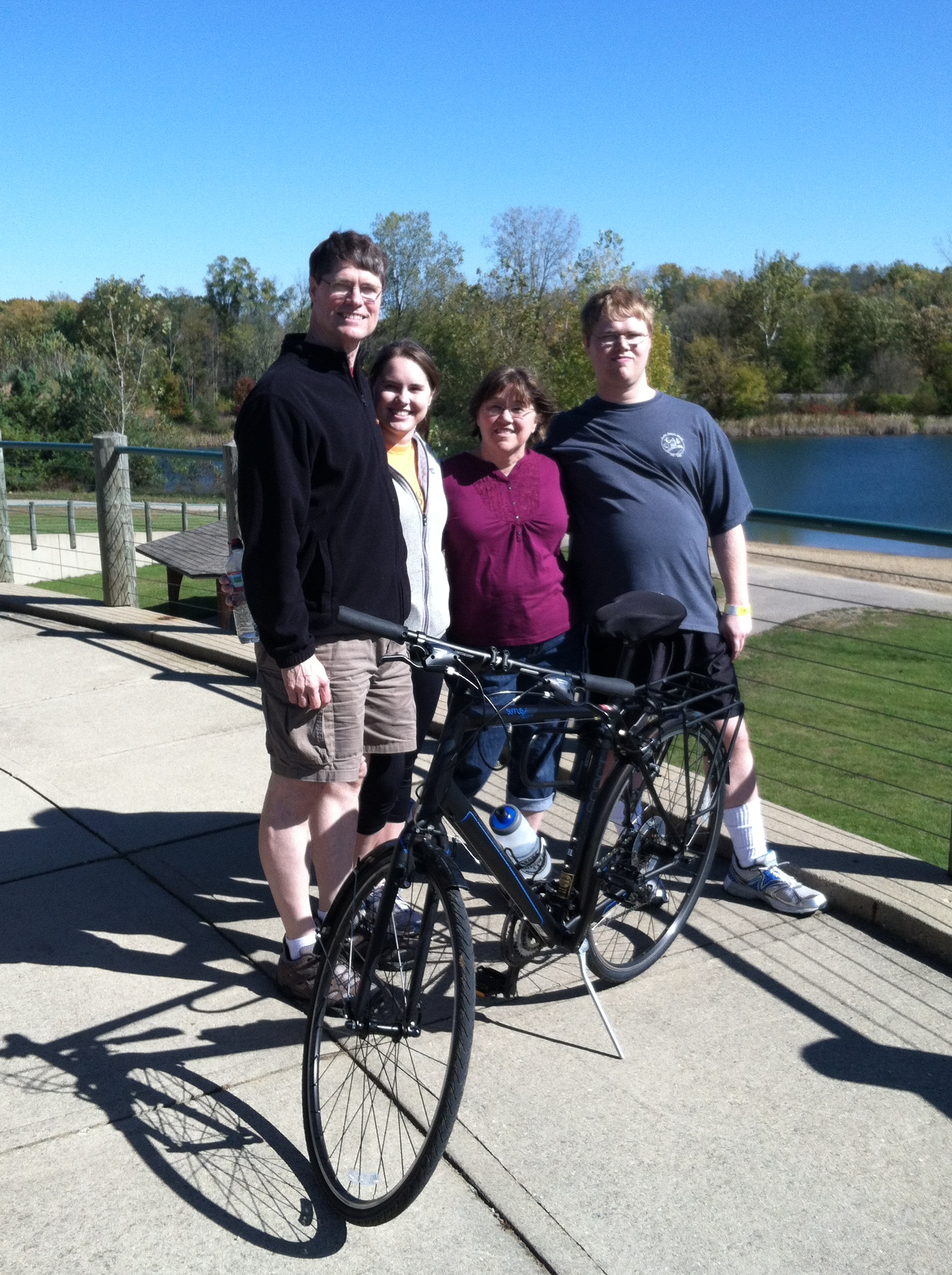|

|
| Bruce Mills (Photo by Keith Mumma) |
Born and raised in Storm Lake, Iowa,
Bruce Mills grew up in a working class
family of seven children. When not
caught up in the commotion of a large family or the seductive tales told by his
British grandmother, he was dribbling a basketball or trespassing onto
neighborhood driveways (or into gyms) to shoot baskets.
As a teacher, Bruce has a broad
and deep fascination with
storytelling. He has published on how
writers such as abolitionists Harriet Jacobs and Lydia Maria Child sought to
create more inclusive narratives of American democracy. His book Poe, Fuller,
and the Mesmeric Arts
explores why Edgar Allan Poe and Margaret Fuller turned to early notions of the
hypnotic state in their tales or essays.
Bruce has published creative
nonfiction in The Georgia
Review, New England Review, September 11, 2001: American Writers Respond, and
Gravity Pulls You In: Parenting Children on the Autism Spectrum. Along with
Debra Cumberland, he co-edited
Siblings and Autism: Stories Spanning Generations and Cultures. His advocacy
in relation to autism has led to
presentations at numerous conferences.
His writing has also been recognized through reception of the B. Frank
Vogel Scholar award to attend the Bread Loaf Writers’ Conference and a Pushcart
Prize special mention. Bruce teaches at
Kalamazoo College in Michigan.

Zinta for The Smoking Poet:
Welcome to the pages of The Smoking Poet, Bruce. Congratulations
on your new book, The
Archaeology of Yearning, published by Etruscan Press. I can tell you that
when I received my copy, I had some general expectation about a book that would
be a story about parenting a child with autism. Well, yes and no. What I found,
upon reading, was one of the most beautifully written, poetic accounts of a
parent’s love and devotion to his children, his family, one member of which is
Jacob, your now 22-year-old son who has autism. Please tell our readers
something about your book and how you came to writing it, the story of the
story, so to speak.
Bruce Mills: Thanks,
Zinta. The story of the story is about
the struggle to find the time and form for the book. I drafted an early version
of what opens An
Archaeology of Yearning, “Flesh and Blood,” in the summer of 1995. In
it, I sketched out a memory that seemed
especially urgent to get on paper, the time when my three-year-old son, who had
very limited language, yelled “What is happening? What is happening?”
when he was denied video
time. Later, in 2000, I tried to coerce
experiences into a traditional, chronological narrative beginning just before
Jacob’s diagnosis and ending around the time my son was eight and daughter
ten. The 70-80 page manuscript felt flat
and uninspired, as if I was seeking events to fill out a time line rather than probe
memories that had a powerful gravitational pull, so to speak.
So I labored with the writing
(and the living) for a long
time—a very long time—before finding my way to the archaeological metaphor and
the current shape of the book. In the
title chapter, the last piece in the book, I talk of running across a National
Geographic article on the Chauvet cave art.
These beautiful drawings and the story of their discovery led me to
reflect on how remembering is like an investigation of a sacred site. The memories
that we collect—or
recollect—suggest a landscape more than a timeline. Moreover, to try to
put these recollections
in a rigid chronology may actually distort the truth of an experience. So I
decided my task was to search for
central artifacts, scrutinize them, and then see how they connect with other
fragments in adjoining quadrants and the layers beneath. The archaeology metaphor
provided a kind of
method and helped me understand that I could leave out a great deal and still
capture the story.
Zinta: You have
said that this book is not about autism. How
would you describe it? What are the elements of archaeology and yearning here?
What is your yearning?
Bruce: It is
important for me that readers understand there
is more to be found in the book than facts about autism, although this aspect
of my son’s identity is immensely important and does clearly affect the
landscape of the story. I began
to see that my memoir told a very old
tale. It is about getting lost, about
needing to shed an old self, and, of course, about the role of others in
helping find a new way of seeing and, in doing so, a sturdier and more
steadfast kind of hope and connection.
In the last chapter, for instance,
I tell of my son’s
endless drawing and his persistent writing of “The End.” During
a time when he had lost language, he
still used pens, sticks, and his own finger and spit to mark those words on
paper, in dirt and sand, and on windows.
These were hard years, but, the more I mapped out the grid of our lives,
the more I understood how Jacob was really seeking to connect through this
expression. In this way, the story is
not about autism but about developing a rich relationship across
difference. For this reason, and it may
not best serve the marketing of the book, I left autism out of the title.

|
| Jacob and his mother, Mary, at the craft store |
Zinta: Why is
storytelling of so much importance? Why do we need
stories?
Bruce: I mentioned
that my memoir in part is about getting lost. For me, this is another way of
saying that,
initially, I could not easily fit my son’s behaviors and my relationship with
him into how I had come to understand children and childrearing—or into the
stories that I had read about child development or the dynamic of family
life.
I believe that we are constantly
creating who we are through the stories
we tell—whether we acknowledge it or not.
The past is only meaningful as it is given order through some kind of
narrative. The future becomes manageable,
so to speak, through the cohering power of how we imagine a place within
it—which means that we have some kind of plot in mind regarding our goals and
relationships or such things as a moral life and the inevitable reality of
death. In The Things They Carried,
Tim O'Brien voices some of these ideas: "Stories are for joining the past to the future. Stories are for those late hours
in the night when you can't remember how you got from where you were to where you are. Stories are for eternity, when memory
is erased, when there is nothing to remember except the story."

|
| Bruce Mills, his wife Mary Holtapp (in purple), and their children, Sarah and Jacob |
Zinta: Writing
a memoir is a touchy thing, few if any type
of writing more sensitive. You are, after all, writing about your closest
beloveds. How did your family participate and finally accept this book?
Bruce: Ah, yes, you
put your finger on one difficult dimension of creative nonfiction. Ultimately,
and I do not think I can get
around this fact, my memoir embodies a trespassing upon the private lives of my
son, daughter, and wife—and others who get written into the narrative. This
issue is magnified in connection to my
son because, at this time in his life anyway, he is not capable of responding
to how he is represented in the book. No
matter what is said or how it is said, I am selecting and shaping the
memories.
In a workshop at Bread Loaf Writers’
Conference a number of
years ago now, I remember pushing back against the idea that a writer’s sole
obligation is to the integrity of his or her own story. What I did not
articulate well at the time,
I suppose, was that this notion of integrity can be a complex one, especially
when it comes to disability. If I
believe that we are shaped by stories, after all, it is possible that I can get
locked into formulaic (and sometimes problematic) plotlines about what is
possible for my autistic son. I am not
sure that I am that “free” or independent from the influence of other stories
and images. So, as a writer, I live
with both the truth of this dedication to my personal vision and to the need to
be vigilant concerning its limiting force upon others’ lives.
But, to bring this down to practical
matters, I negotiated
these concerns—at least with my wife and daughter—with having them read the
book as it took shape. With Sarah, more
specifically, I asked her to relate those memories that seemed most vivid to
her and worked from these notes in the third section of the book, the one
focusing on her experiences with Jacob. In
the end, they accept the book and see in it a truthful and accurate expression
of our experiences. This is not to say,
of course, that they would choose the same memories or render the past in the
same way!
Zinta: We often
talk about what we, as parents, teach our
children—but our children surely teach us as much or more. What has Jacob
taught you? What has Sarah taught you?
Bruce: In my
acknowledgements to An Archaeology of Yearning,
I thank my son for his love and “rituals of living” that “compel me to write
and to reconsider all that I think I know.” At the end of “Flood
Plain,” I conclude with
the admission that living with Jacob is “about the painful unburdening that
comes when the mind expands to see anew.”
These lines capture what I think he has taught me; he has given me the
potential to understand the world through a different lens. I must confess,
though, that at times this
process of seeing anew is like a re-breaking of a poorly-mending fracture to
create a better healing.
In the past year or so, Sarah
has begun to help me become
less of a parent with a capital “P.” She
reminds me that I do not need to force a lesson from every experience, as if
she might not understand its meaning or, more importantly, have her own way of naming
it. In looking back, I feel that, in an
effort to protect her, I was sometimes a bit harsh. It was not doing her any
service, I thought,
to pretend that “fairness” demanded some immediate and equal compensation when
Jacob might be taking so much of our time and energy. That Sarah loves
Mary, Jacob, and me with such
openness and depth—having been a witness to so much fallibility and chaos—is
moving.
Zinta: Autism
is a fast growing concern, with diagnoses
springing up everywhere. There is talk of all kinds of causes, some with merit,
some surely without, based on fear and lack of education. But we need to keep
an open mind if we are to find the answer or answers. You are not just a writer
and educator, but involved also with groups dedicated to helping those whose
lives are touched by autism. What do these people say and believe? What
theories make most sense?
Bruce: I hope
that I can do justice to these questions. Perhaps one way to approach autism
is to
understand that there is no blood test.
Diagnosis emerges from close observation of social interactions, communication,
ritualistic or repetitive acts, and sensory-processing issues. Regarding sensory
processing, for example,
some people with autism cannot easily interpret sound; words are
undifferentiated noise. Others cannot
filter out the flickering of a fluorescent light or a strong perfume—and, if
nonverbal, may act out to try to express distress. It is also important
to know that autism is
a spectrum disorder—which means that, on one end of a range, some are highly
impaired when it comes to social communication, perseverative behaviors, and
responsiveness to sensory input and, on the other end, others are much less
affected and, perhaps, capable of high achievements and distinctive
contributions in chosen vocations. Some
are verbal, others nonverbal, and so on.
In part, more people are being diagnosed because there is a greater
knowledge of this spectrum of behaviors and impacts.
Theories regarding autism often
point to a central issue:
those with autism have trouble maintaining joint attention. Some research suggests
that the brain is not
wired to attend to human faces, to engage in eye contact, or to pick up easily
on the inner states of others. Objects
such as a toy train or a lamppost can be as compelling as a human face. Imagine,
then, negotiating a world where
everyone seems to be picking up social cues and you are not. In one study, researchers
tracked the eye
movement of viewers watching Who’s Afraid of Virginia Woolf. Neurotypicals
focused on the eyes, often
switching back and forth between those of different actors in a scene. People
with autism tended to concentrate on
the mouth and, often, looked at other objects on the screen.
It takes a great deal of time
and energy, then, to teach
those with autism to attend to the eyes or to other social behaviors that lead
to joint attention. But this is
possible. With my son, one of the most
satisfying accomplishments is his acquiring the tools and coping strategies to
bridge the gap between his way of knowing and mine; for me, I hope, it is the
growing capacity to demand less of my neurotypical perspective when he is enjoying
the world in
his own way. To get to this place speaks
to the endless work of my son, his teachers, aides, and many, many others—and
to a cost, thankfully, that has become more recognized through changes in
insurance and addressed through other forms of public and private funding.
Zinta: I recently
did some research for a cover story about
autism in a regional magazine, Encore,
and one of the comments I heard strikingly often when talking to families with
members who have autism—and that included you—was that you can’t quite bring
yourself to regret having it come into your lives. That it might even be a gift
… a different way of knowing. Explain.
Bruce:
Yes, this re-framing of our notions concerning autism
has been constantly evolving. In recent
years, the term neurodiversity seeks to capture this new perspective. Might
we not see autism as evidence of human
diversity, as a different mode of experiencing the world with its own
strengths? Do we always need to focus on
what is absent or impaired as compared to those who are wired for a another
kind of social interaction? I do not
believe that we should diminish the challenge faced by those who have autism
and those who live with and assist them.
Some individuals on the spectrum struggle with profound communication
and sensory issues that may lead to isolation and aggression. Still, my son’s
persistent desire to draw
images of storybook or television characters like Madeline, Pooh, and others reflects
a creative presence.
By the way, if not regret, I
did succumb to depression,
years of it. I wrote the book, in part,
to give a more hopeful story to what at times seemed hopeless.
Cover story, "A Different Way of Knowing," by Zinta Aistars, on Bruce Mills and his family and about autism
(Click on image to read).
Zinta: How is
Jacob doing today?
Bruce: Just
the other day, he called to me from the living
room. “What are those birds?” he
asked. I came into the room, and we both
looked at two mourning doves sitting together on the back deck. I am not sure
I can express what it means to
hear such questions, to be asked to join him in naming what he is seeing. For
years, we had to practice “What”
questions (and the other “w” questions).
For years, as I have written in the book, he did not call out to my wife
and me by name. A whole new world, then,
is opening up. So, how is Jacob
doing? Day by day, month by month, he is
engaging with us in ways that were not available to him in the past. We all
have a long way to go, of course, for
it is not likely that he will be able to live independently. We are enjoying,
however, the life of a
continually evolving interdependence.
Zinta: Where
can people learn more about autism? And about
you and your book?
Bruce: The latter
question is more easily answered. I have a website: http://blogs.kzoo.edu/bmills/ . On it, I do some blogging in relation
to the
book and the idea of storytelling as well as include interviews, upcoming
readings, teaching tools and contact information.
The former question is a bit
harder, because there are so
many books and other online resources available these days—some written as an
introductory understanding of autism and others for those eager to do deeper
research. On my website, people can
click the link, “Discussion Questions,” and scroll down to some selected links.
Zinta: Finally,
Bruce, what is your core message—what you
want our readers to understand most about your story, even if they miss all the
rest?
Bruce: Deep
and enduring connections demand a willingness to
reframe what you think you know about the world.
Zinta: Thank
you, Bruce.
|

